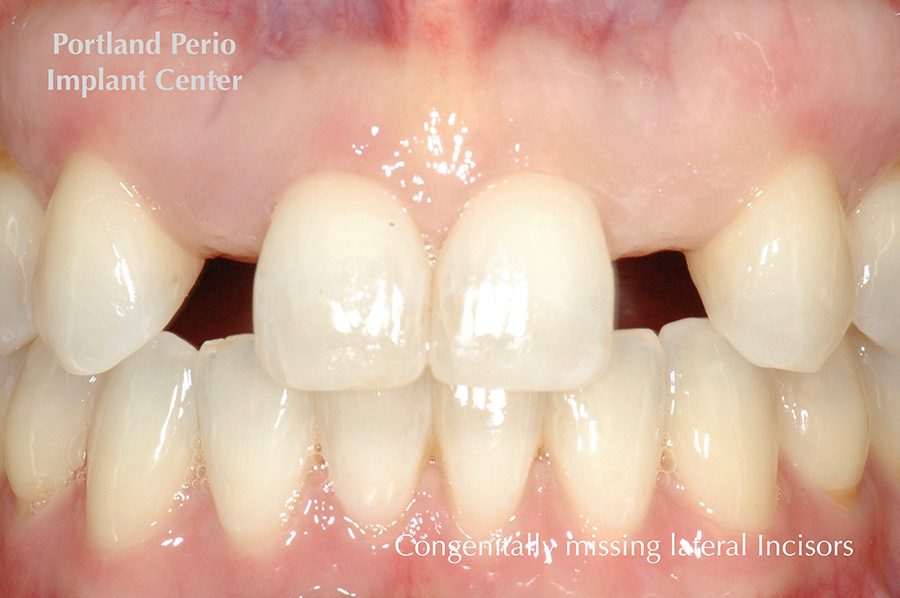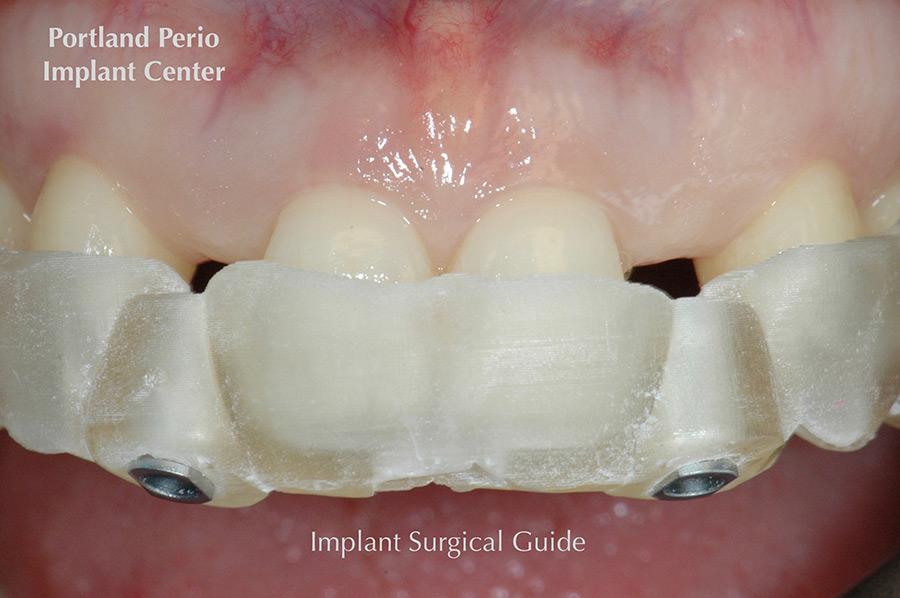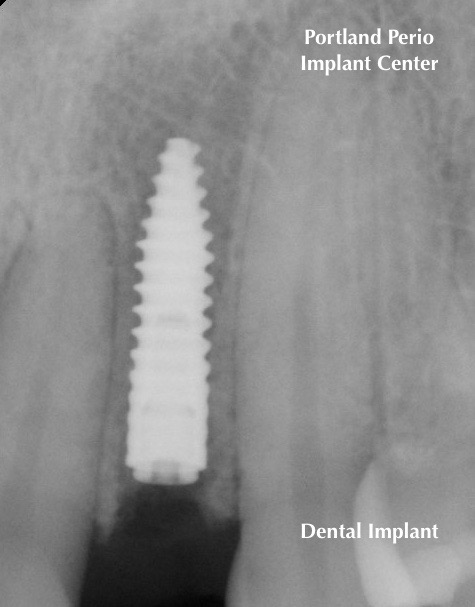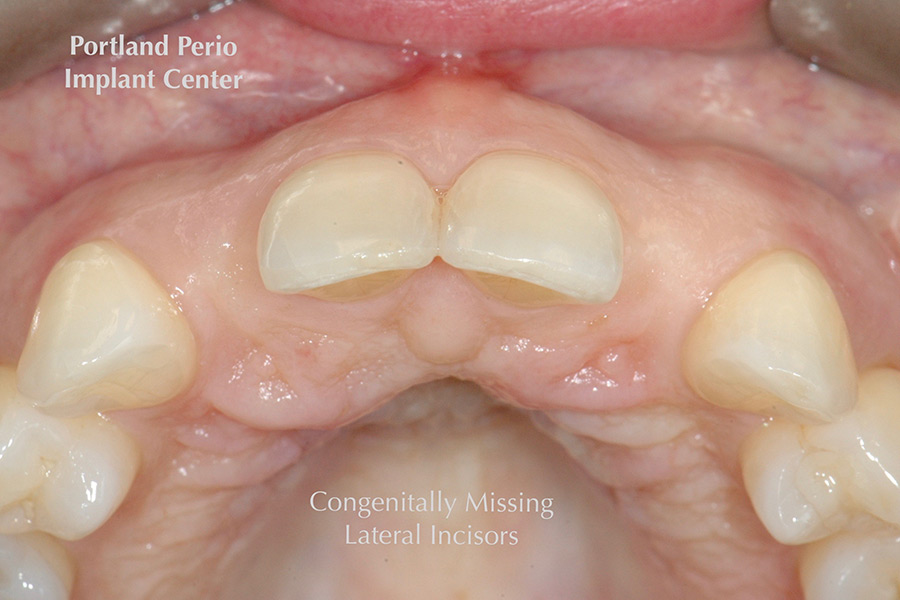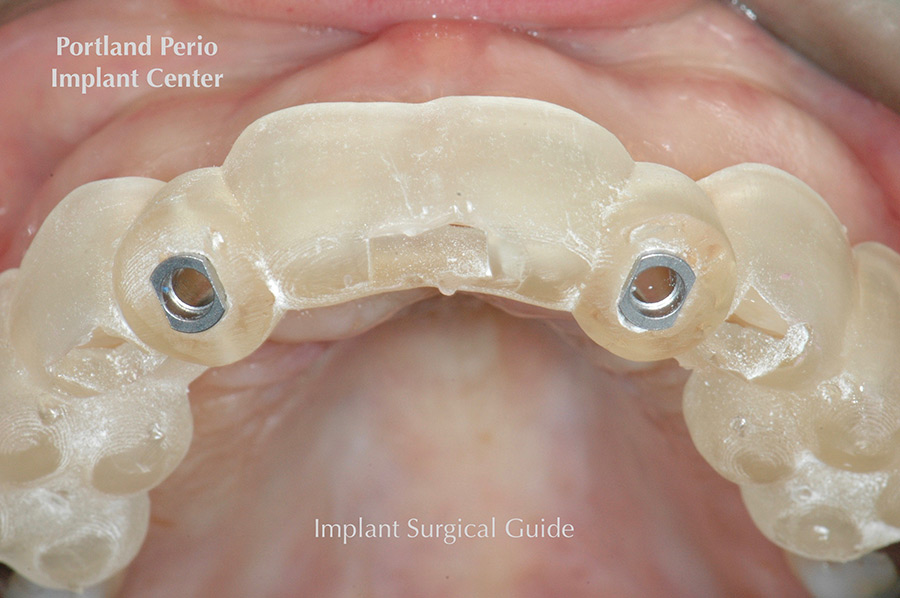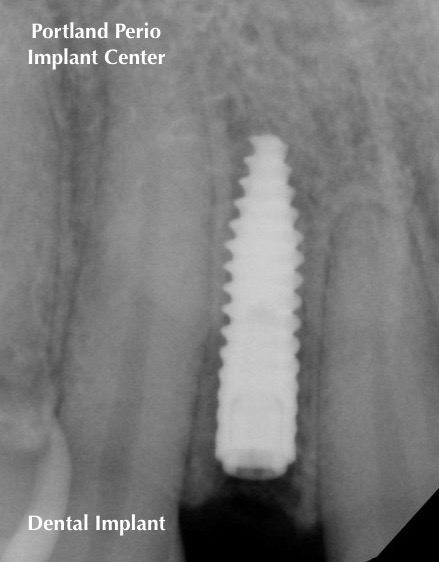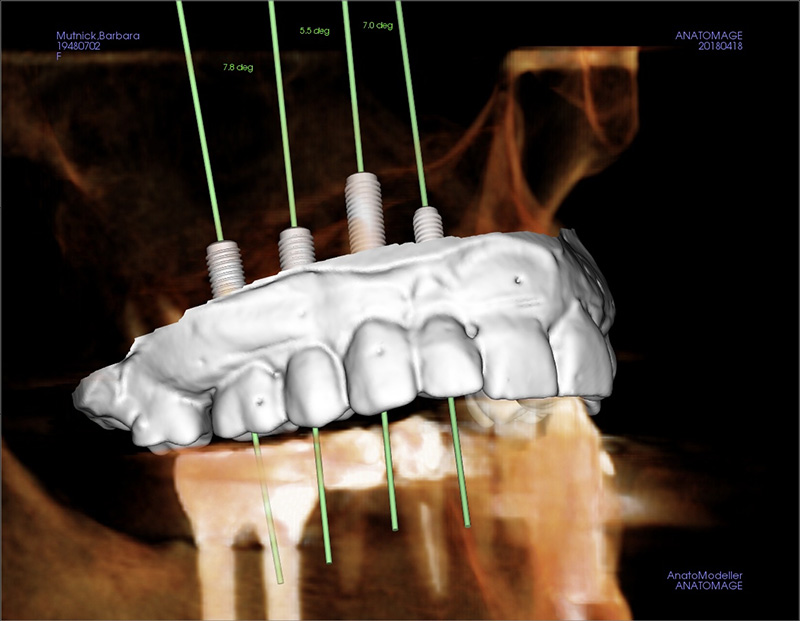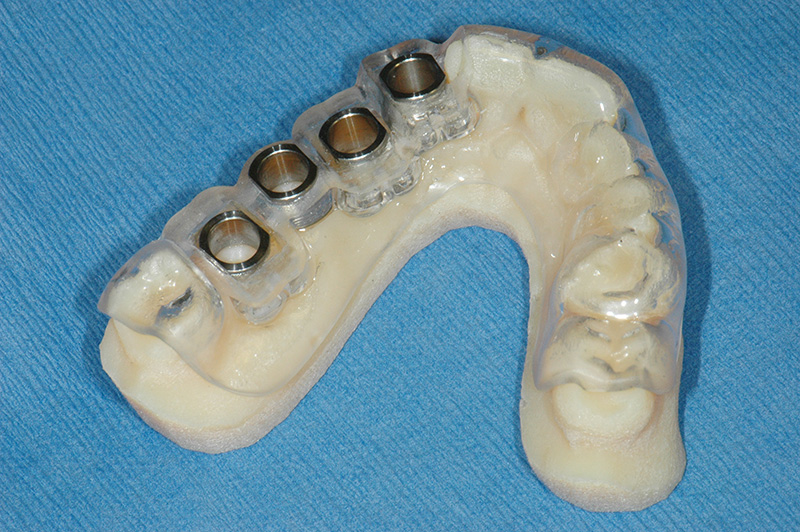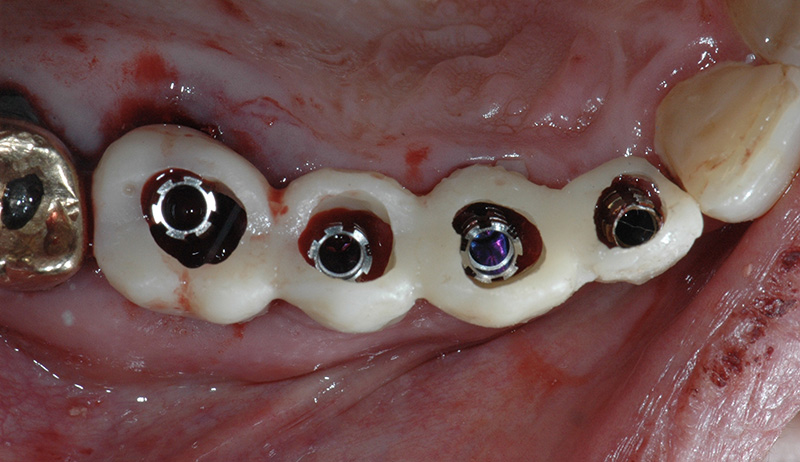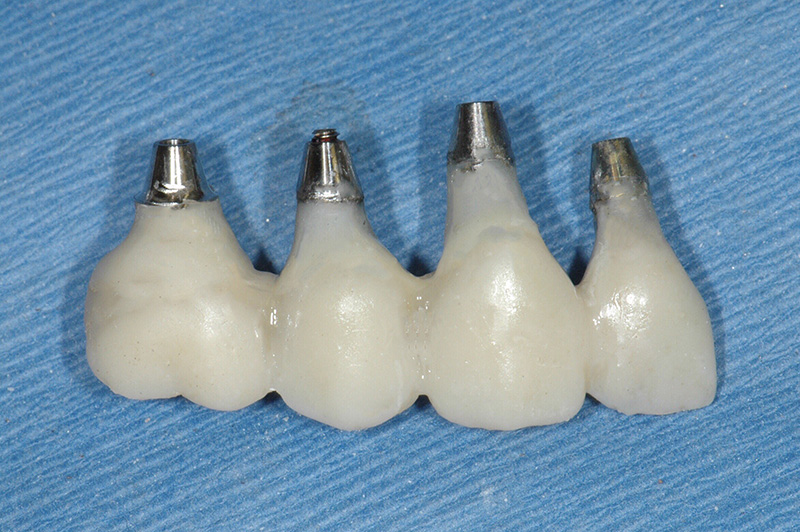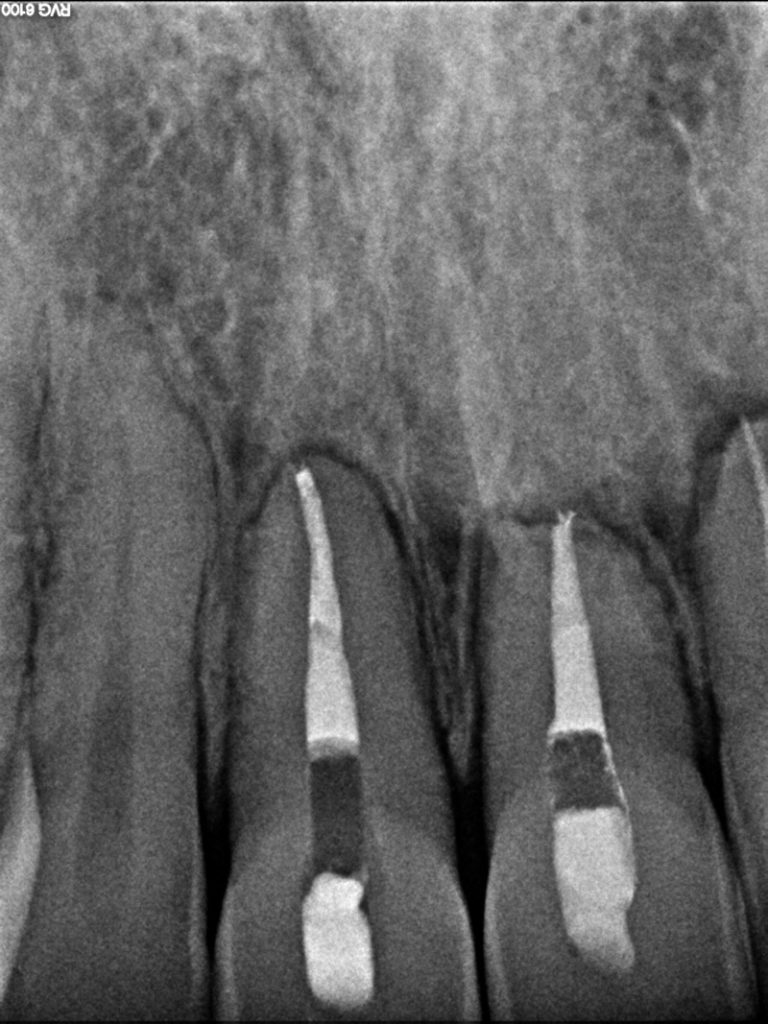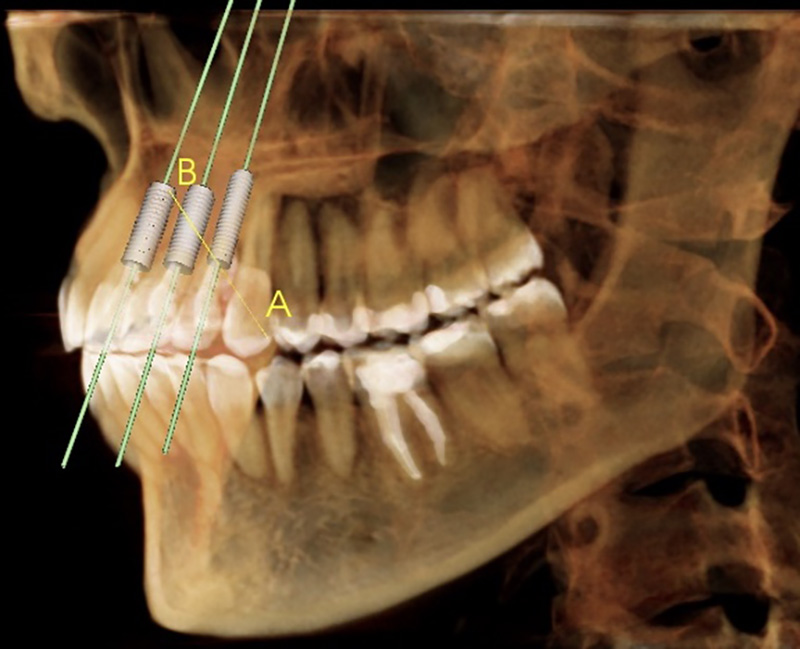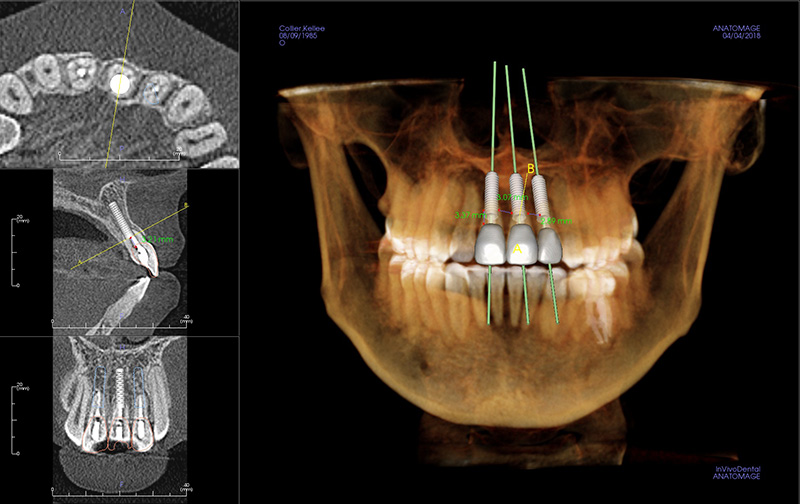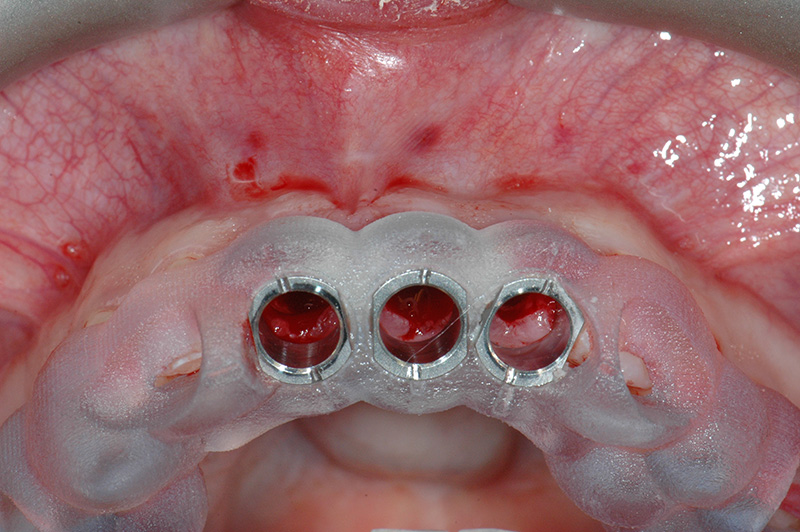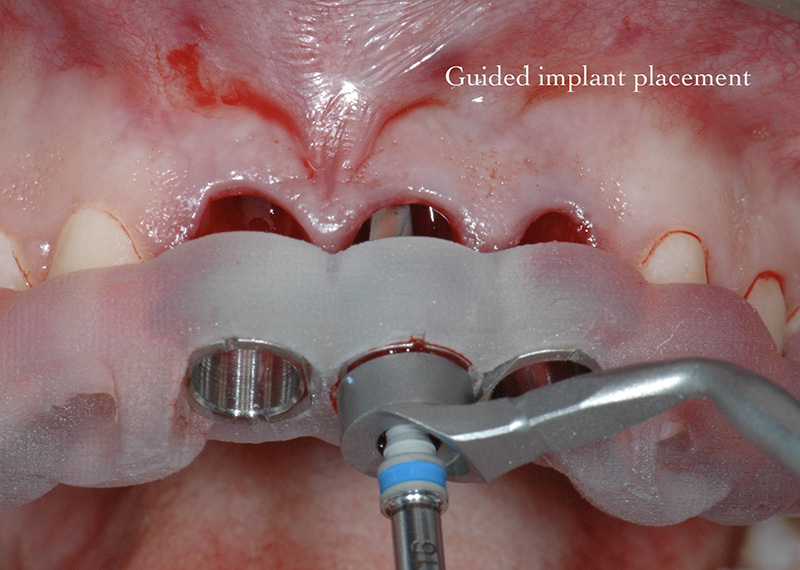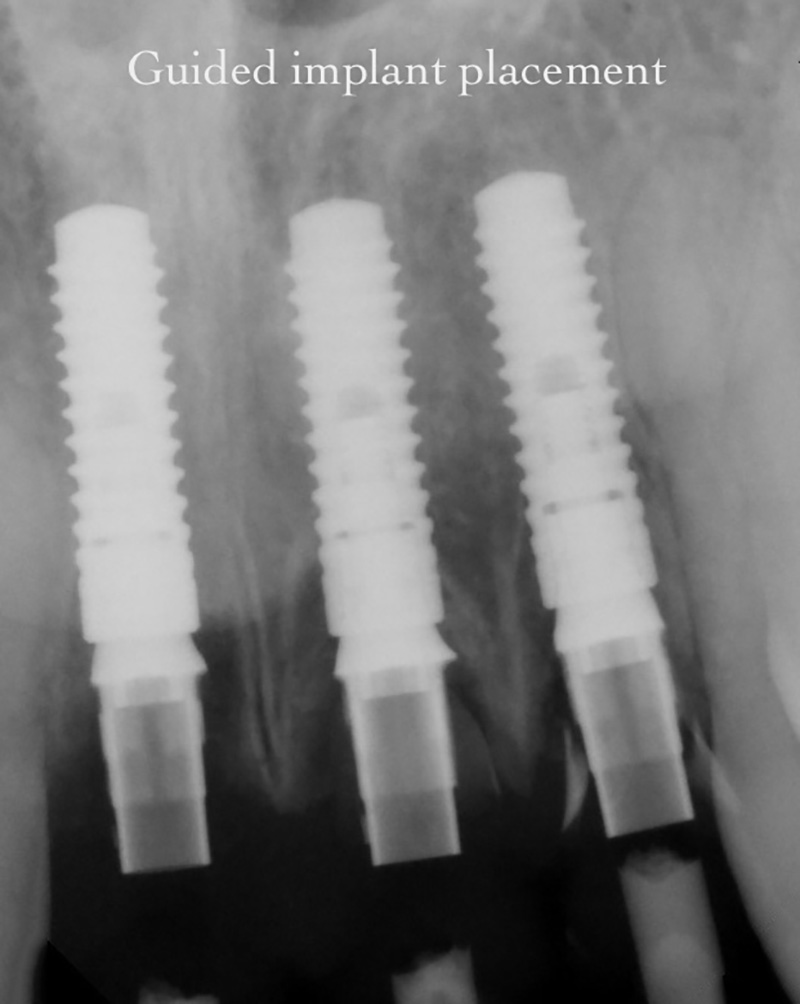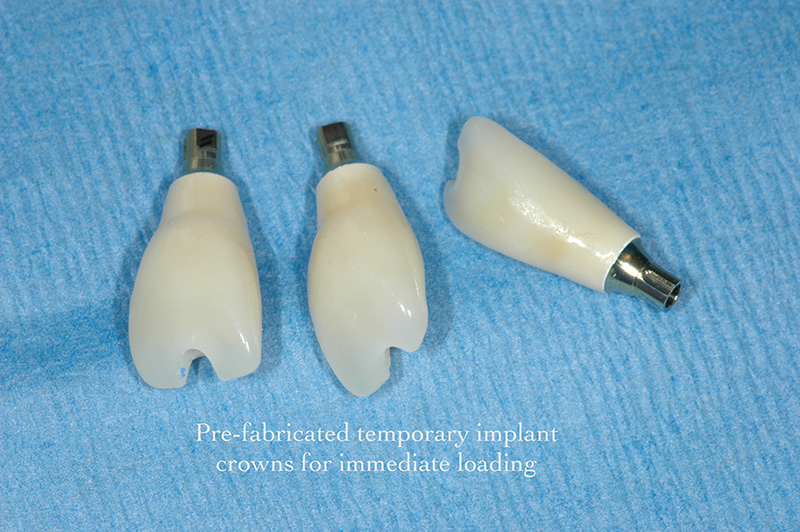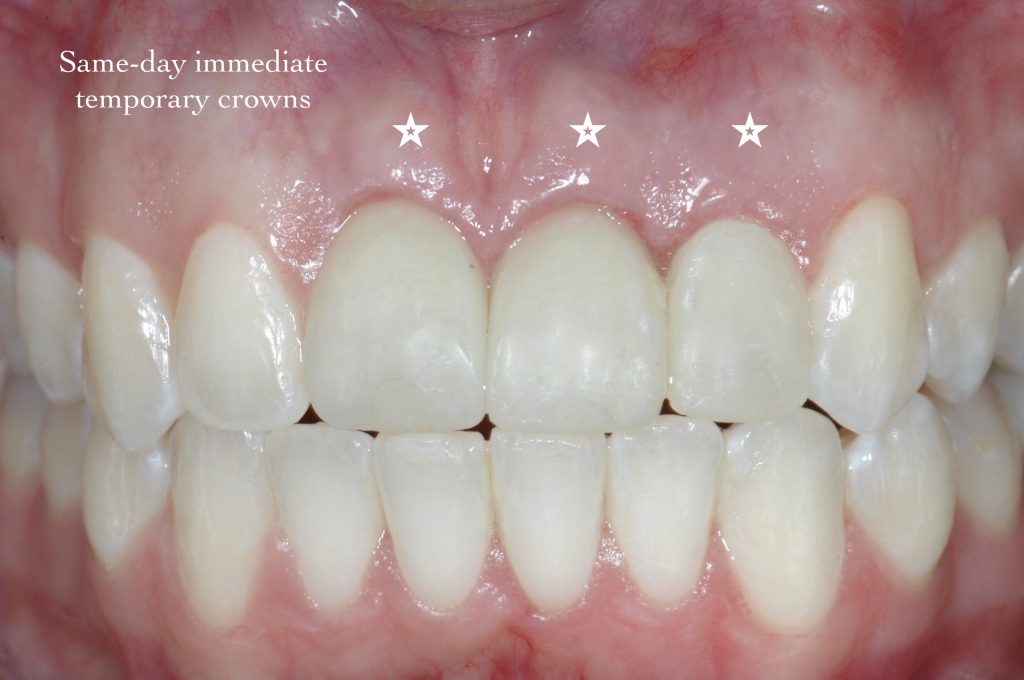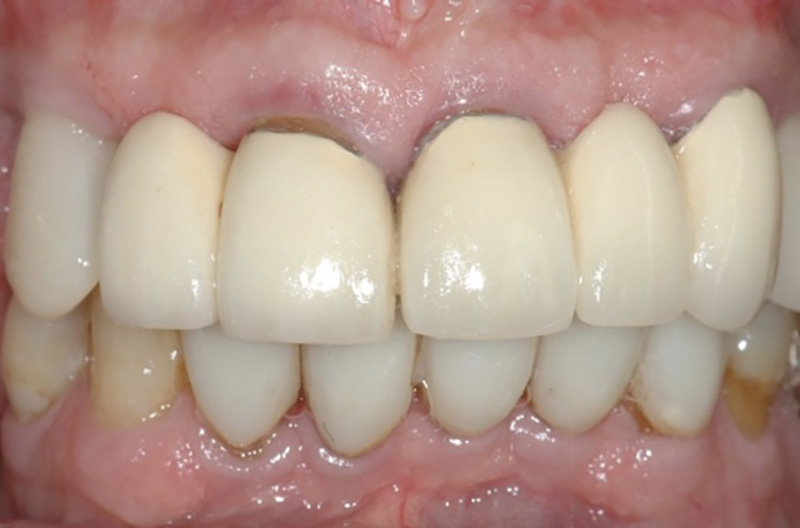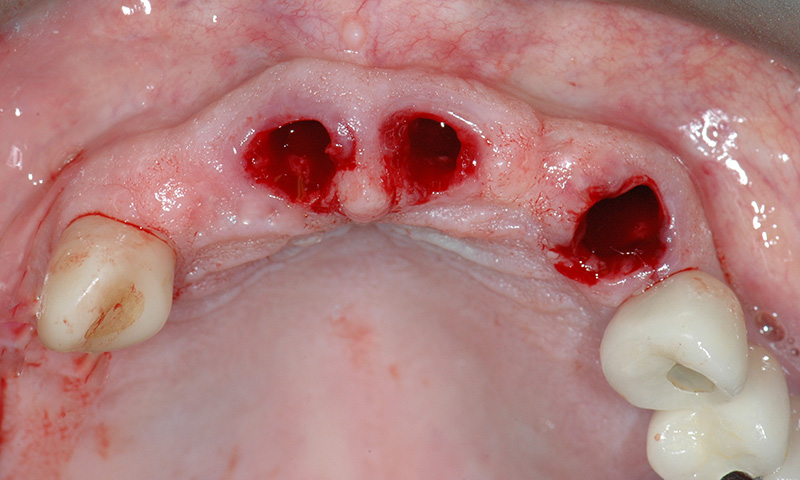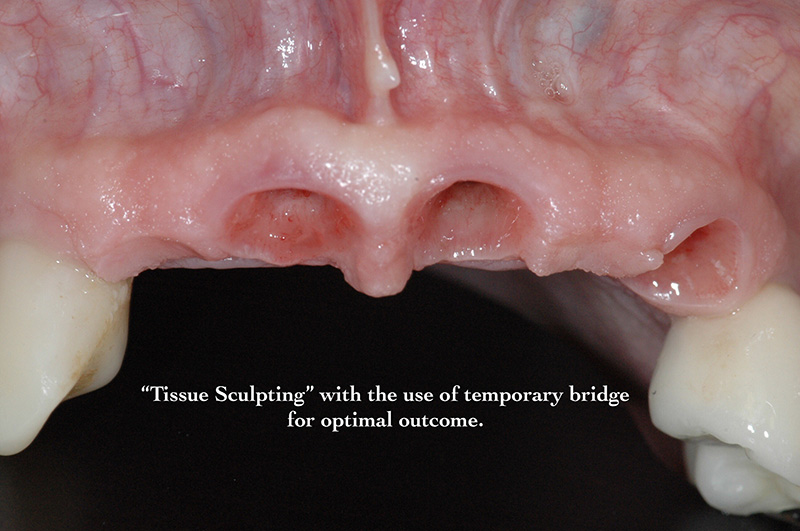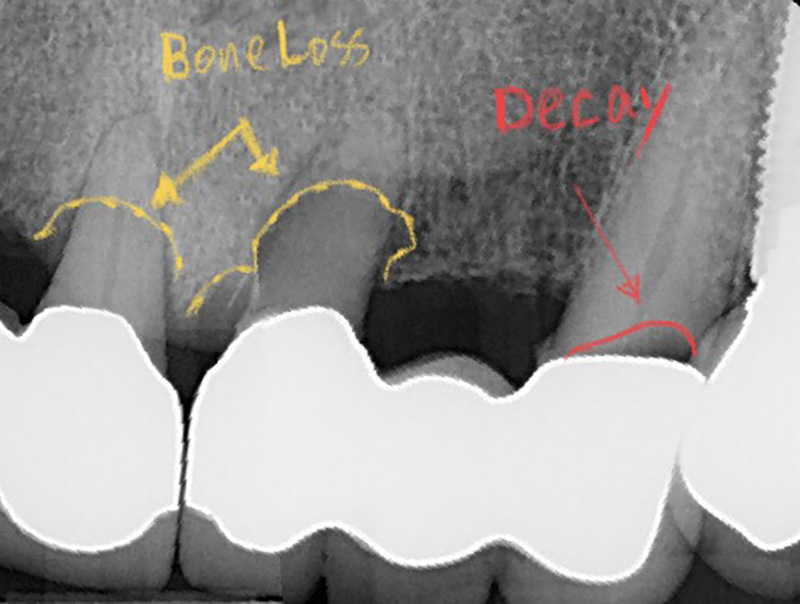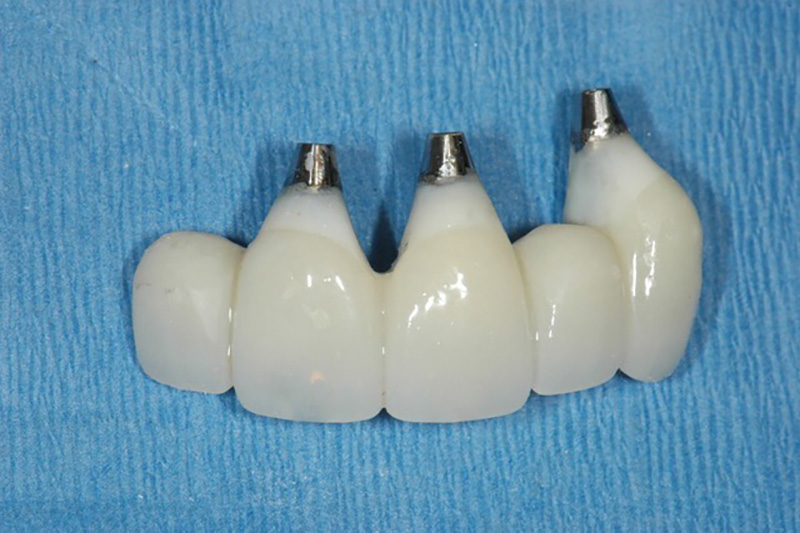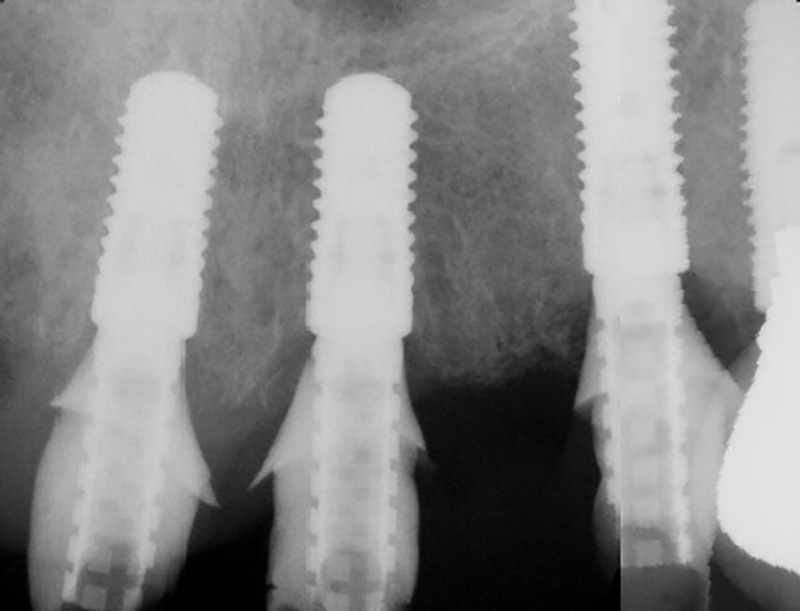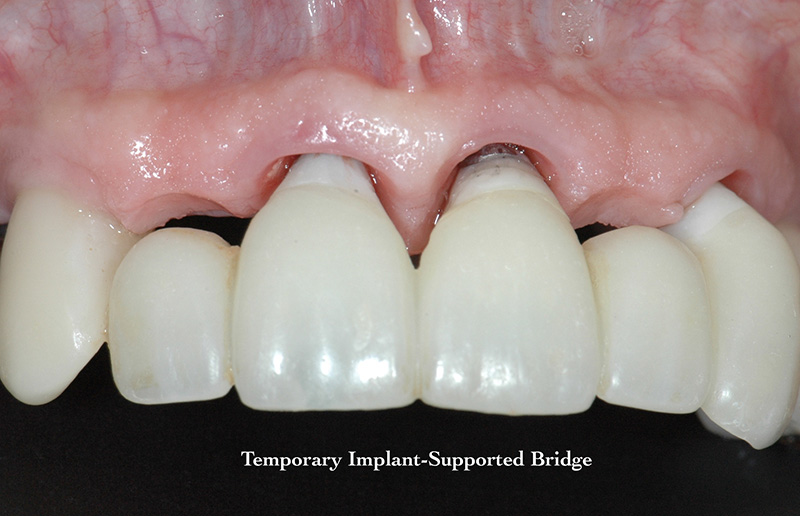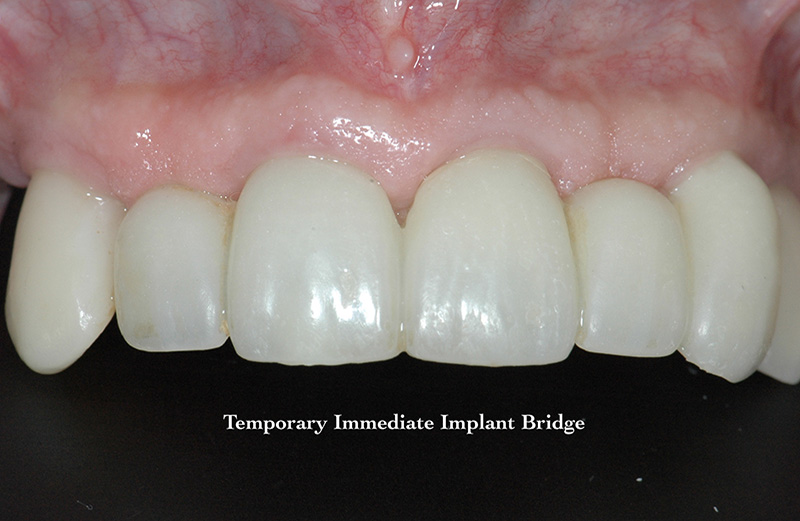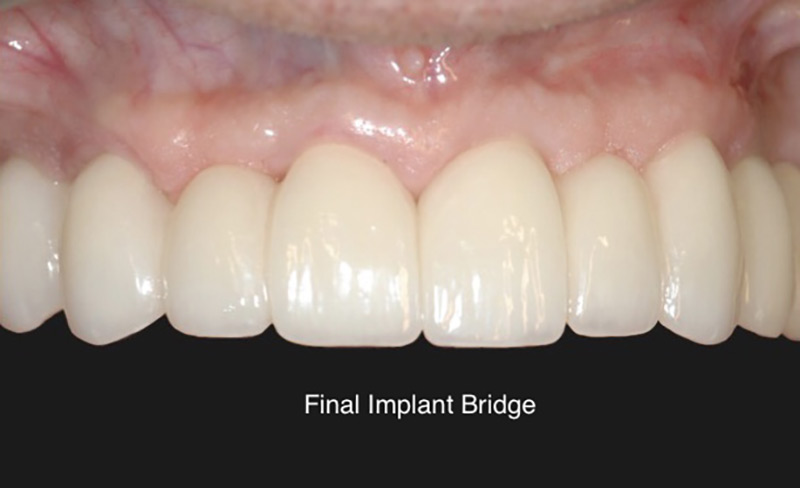The technology of guided implant surgery allows patients to have true restoratively-driven implant treatment. Minimally invasive procedures might be requested by patients to reduce their anxiety and the pain experienced and thus increases the treatment acceptance rate.
Knowing the size and position of the ideal restoration, the implant surgeon uses a 3D radiograph of the jaws to plan the implant placement sites, taking into account the bone volume and anatomy at each site, as well as the position of the prosthesis. With the flap-less procedure, patients experienced pain less intensely and for shorter periods of time. Used in critical anatomic situations and for placing the implant in an ideal position in bone, CT scanning software eliminates possible manual placement errors and matches planning to prosthetic requirements. Dental implants can now be virtually placed in ideal position using the computer prior to ever touching the patient.
Case Study #1
This patient needed replacement of three esthetically-demanding anterior teeth with failing root canals. We used guided surgery for immediate implant placement and same-day temporization of implants using a 3D planning software for accuracy.
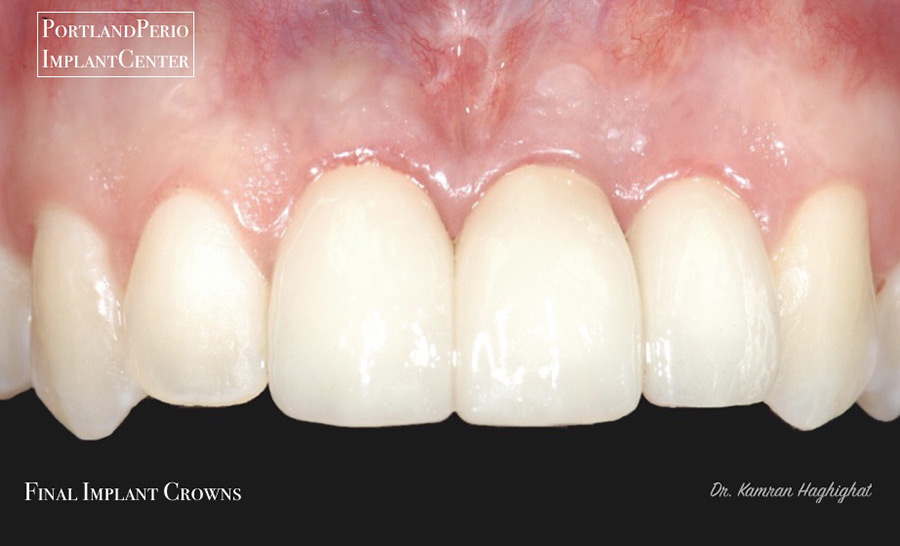
Case Study #2
This patient had an anterior tooth-borne bridge that was failing due to periodontal disease and tooth decay. We used guided surgery with immediate implant placement and same-day immediate temporary implant-supported bridge to restore the failed bridge.
Case Study #3
This patient had congenitally missing lateral incisors. We used guided surgery using intra-oral digital scanner and 3D printing technologies in-office to accurately place implants in these confined spaces.
